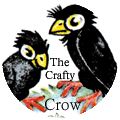The goal for the year is to learn 10 facts of a 100 different animals, totals 1000 facts. There is that 1000 number again. We are going to shoot for 2 animals each week so that we can make it in the year time limit. To help narrow it down sometimes we will do it by the family, like this first week has the whale family. This includes different types of whales and even dolphins, which are whales. Sometimes it might just be about one animal.
If any one has facts that they would like to share about animal please do. I will try to let everyone know the week ahead of time what we are going to do. If you know something about that animal and want to share it I would be happy to post it on our list that week.
So lets get started....
Up first the Whales..

2. Dolphins are actually a members of the Whale Family.
3. The Blue Whale is the loudest thing on earth. Its mating call can reach a whopping 188 decibels, which is louder than a jet engine (140 decibels). Noise is painful to human ears at over 120 decibels.
4. Two main types of whales called baleen whales and toothed whales. Here are some distinct differences between these types of whales:
a. As their name states toothed whales have teeth, but baleen whale. Baleen whales have baleen plates instead of teeth, which they use to filter food.
b. Baleen whales are much larger than toothed whales.
c. Baleen whales have two blow holes, while toothed whales have one.
4. Blue whales are the largest animal ever.
5. Whales are unihemispherical, which means that whales never fully asleep. Each side of the brain take turns going to sleep. This is why a whale does not drown when it sleeps.
6. It has been calculated that a single breath from a mature blue whale can inflate up 2000 balloons.
7. It is now believed that the most recent land ancestors of whales were hippos!
8. The narwhal, an unusual toothed whale with a tooth piercing the upper lip, is believed to be the basis of the legendary unicorn.
9. The blue whale heart is the size of a small car, and a small child can stand in the major arteries leading from the heart. It's eye is the size of a small teacup and their external ear is the size of the tip of a pencil.
10. The only natural predator of humpback whales is the killer whale (orcas), and possibly sharks to very young calves or badly injured whales. Up to 15% of humpback whales in an area may have scars from orca attacks that they have escaped.
Up next we decided to do Walruses. Isn't he pretty!!LOL

1.) The walrus' scientific name, Odobenus rosmarus, is Latin for "tooth-walking sea-horse."
2.)When a walrus sunbathes its skin turns red. The heat causes blood to rush to the skin.
3.) Walruses have air sacs in their necks that enable them to keep their heads above water when they sleep.
4.) Walruses lose their winter coat (a process called molting) every year in June and July.
5.) Walruses use their heads to break breathing holes in ice up to 20 cm(8 in) thick. They use their tusks to widen the holes.
6.) Longer tusks mean higher hierarchical position and older age. If a male loses a tusk, he will lose his rank in the hierarchical scale.
7.) You can tell how old a walrus is by the number of rings you can find in a cross-section of its teeth just like you can tell how old a tree is by the number of "growth rings" it has.
8.) Walruses feed in cycles of 9 days: 2 days of resting on the beach and 7 days of feeding in the sea.
9.) Walrus walk on all four fins. He can even move on land as fast as a man can run. Other pinniped have to drag their hind ends around but a walrus can walk.
10.) Walruses have been close to extinction on a couple of occasions due to overhunting. Walrus tusks, oil, skin and meat were highly valued in the 18th and 19th centuries. Only indigenous peoples of the arctic are currently allowed to hunt walrus and there is a limit on numbers that can be killed.
We hope that you all enjoy our new goal list. Next week we plan on doing octopus/squid (mollusk family) and deep sea creatures. The kinds that you don't really see that often. If anyone has any facts that they would like to share please let me know and I will happily add them to the list.





































3 comments:
This is a GREAT new family challenge! JediBoy and I will love reading along!
For next week, take a look at Vampyroteuthis infernalis, the vampire squid (literally, from hell). It is actually in an Order of its own, Vampyromorpha, because although it shares characteristics with both squid and octopus, it also has sensory *filaments* that it sends out to learn about the world around it. The vampy and the Giant Squid are our family's two favorite squid.
Doncha know, every family should have favorite squid! :D
So much info and how much fun they must have had learning about it all.
Great idea (as always, my brilliant friend)..can't wait to learn along with you all.
Post a Comment